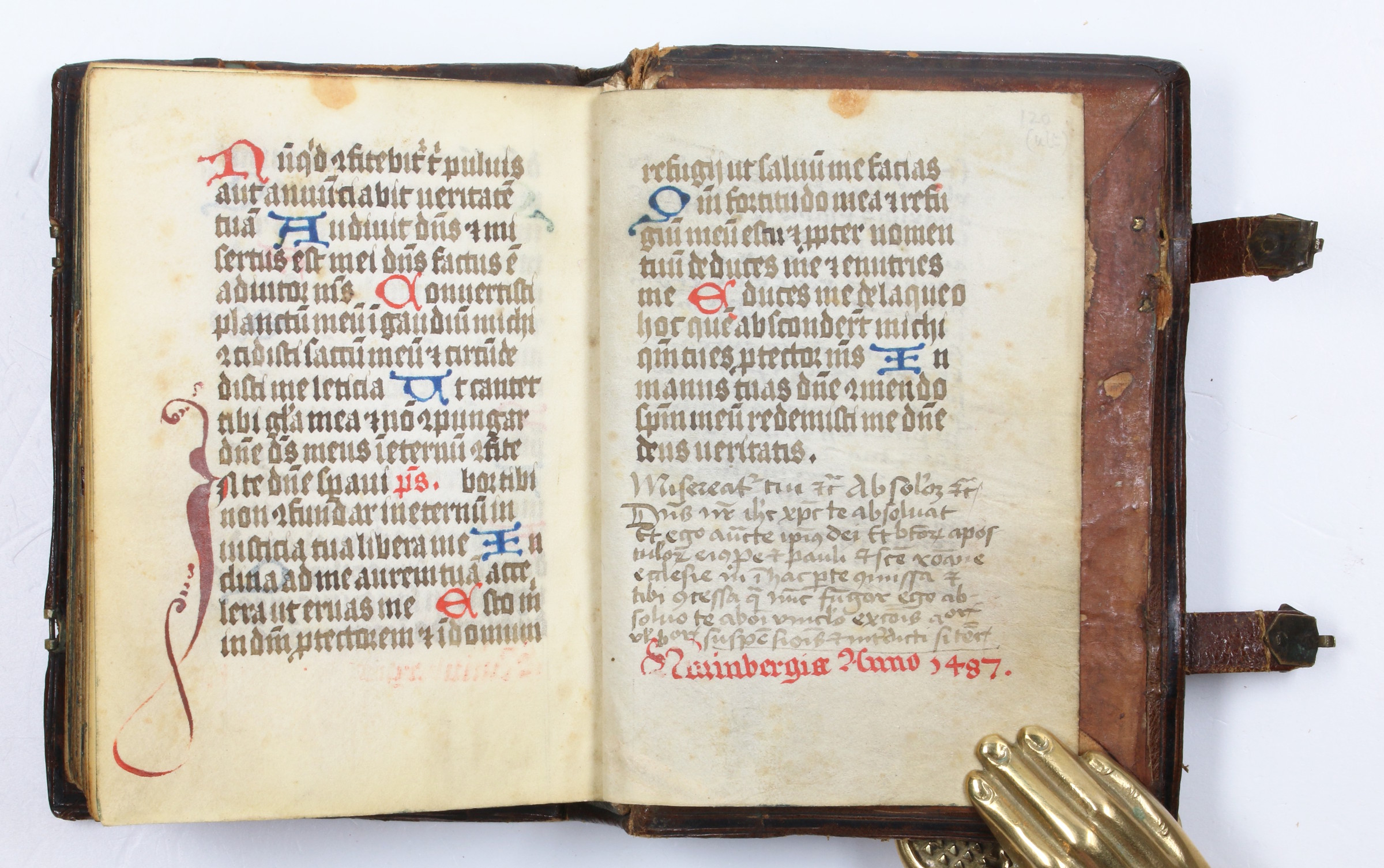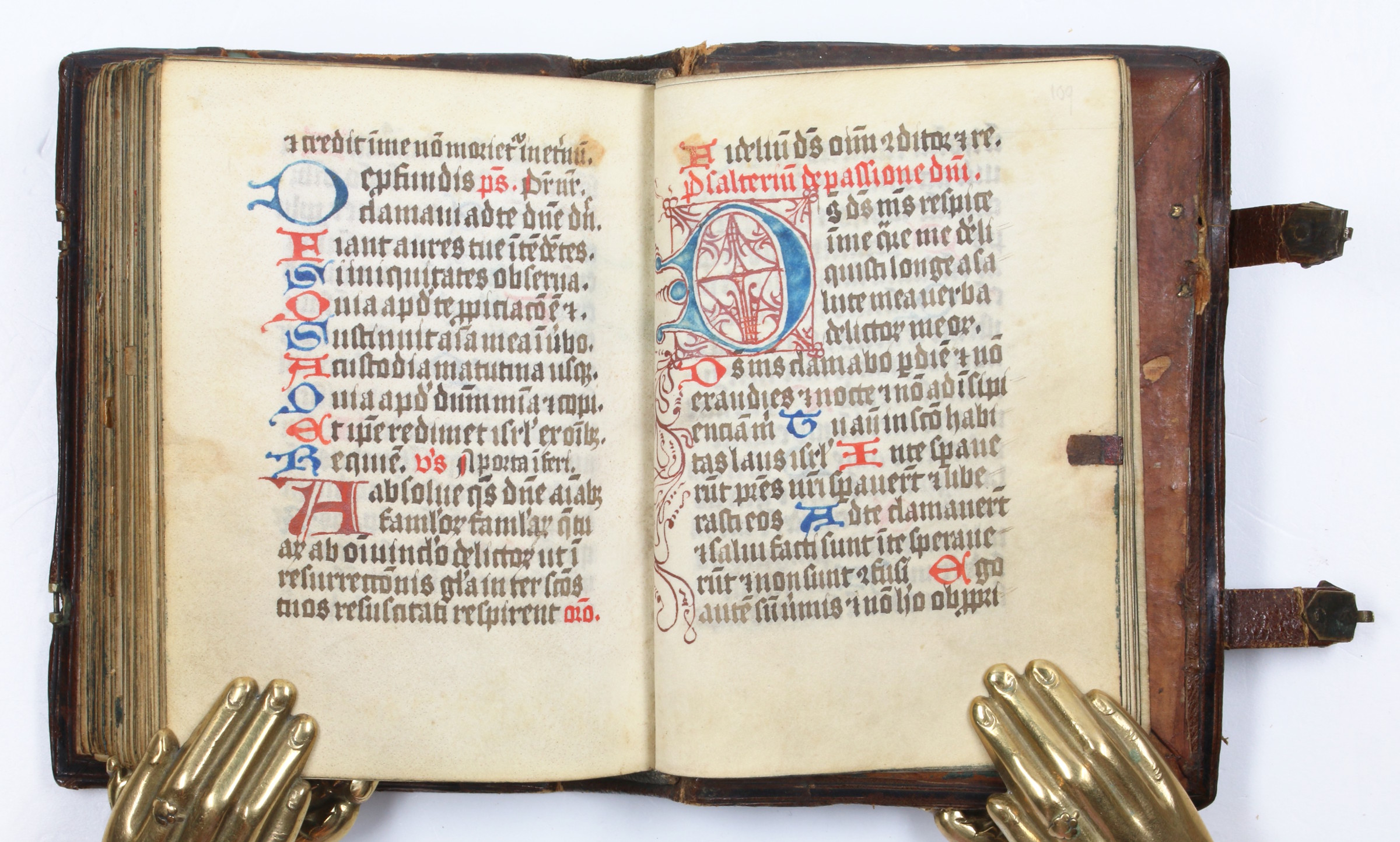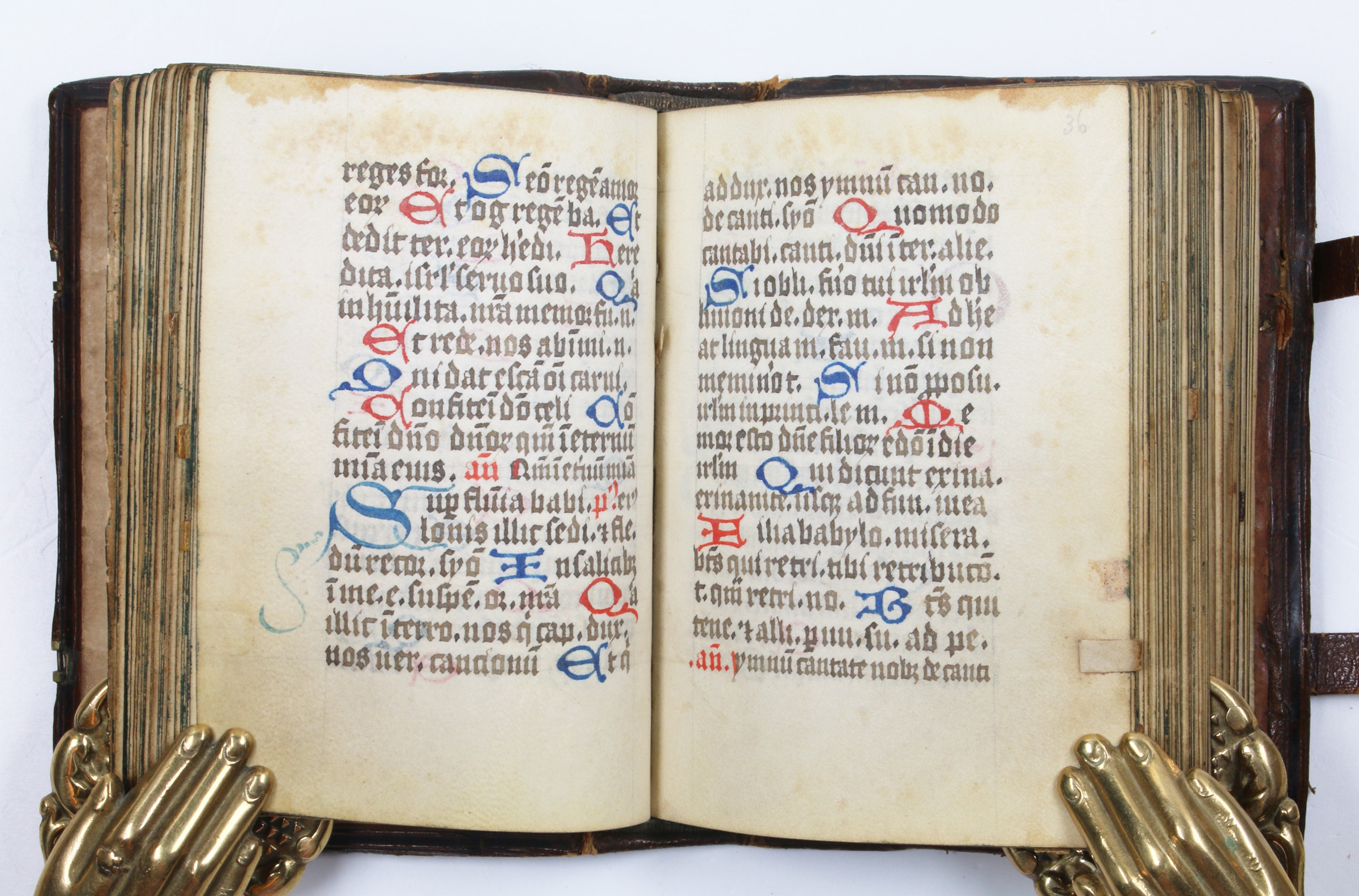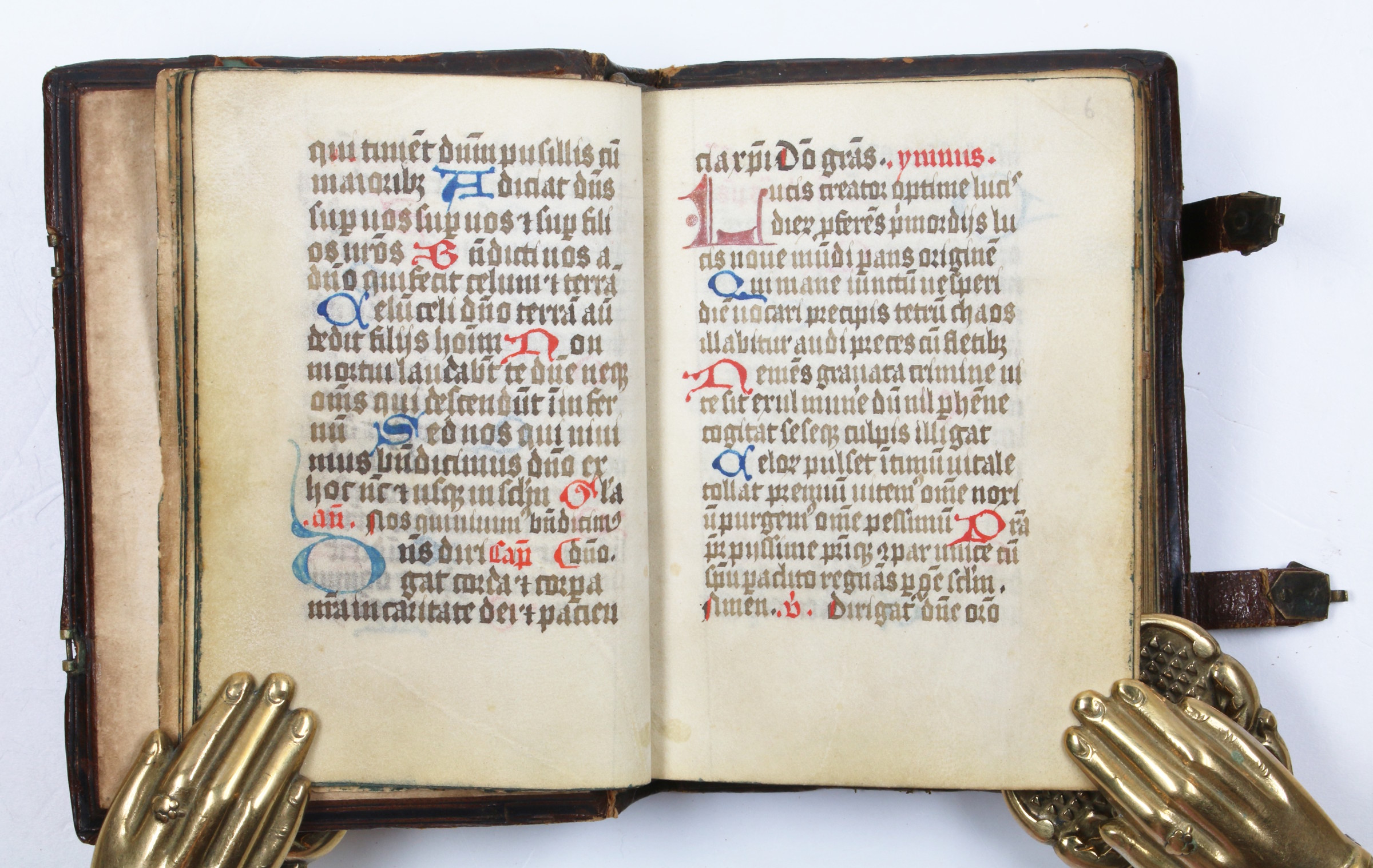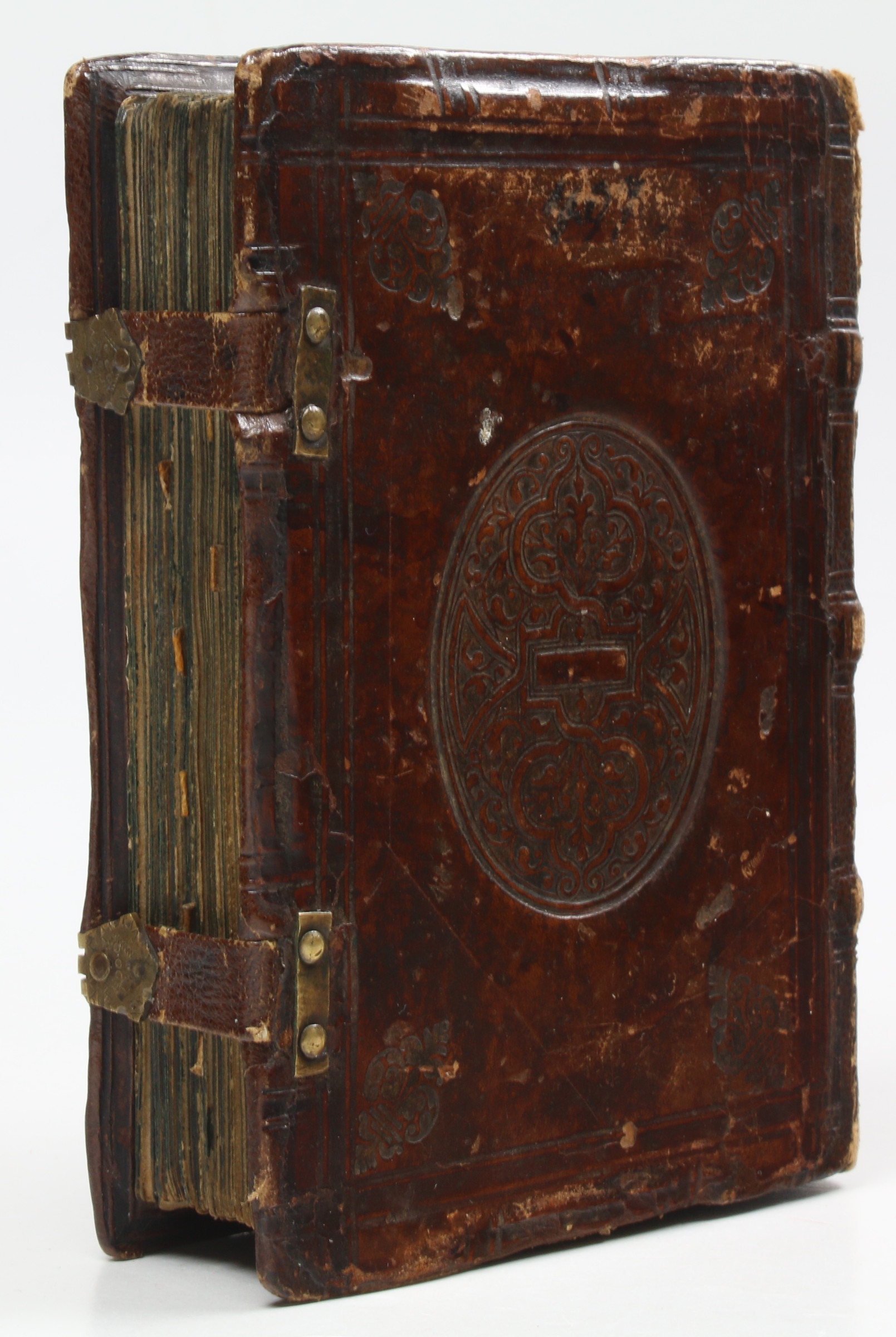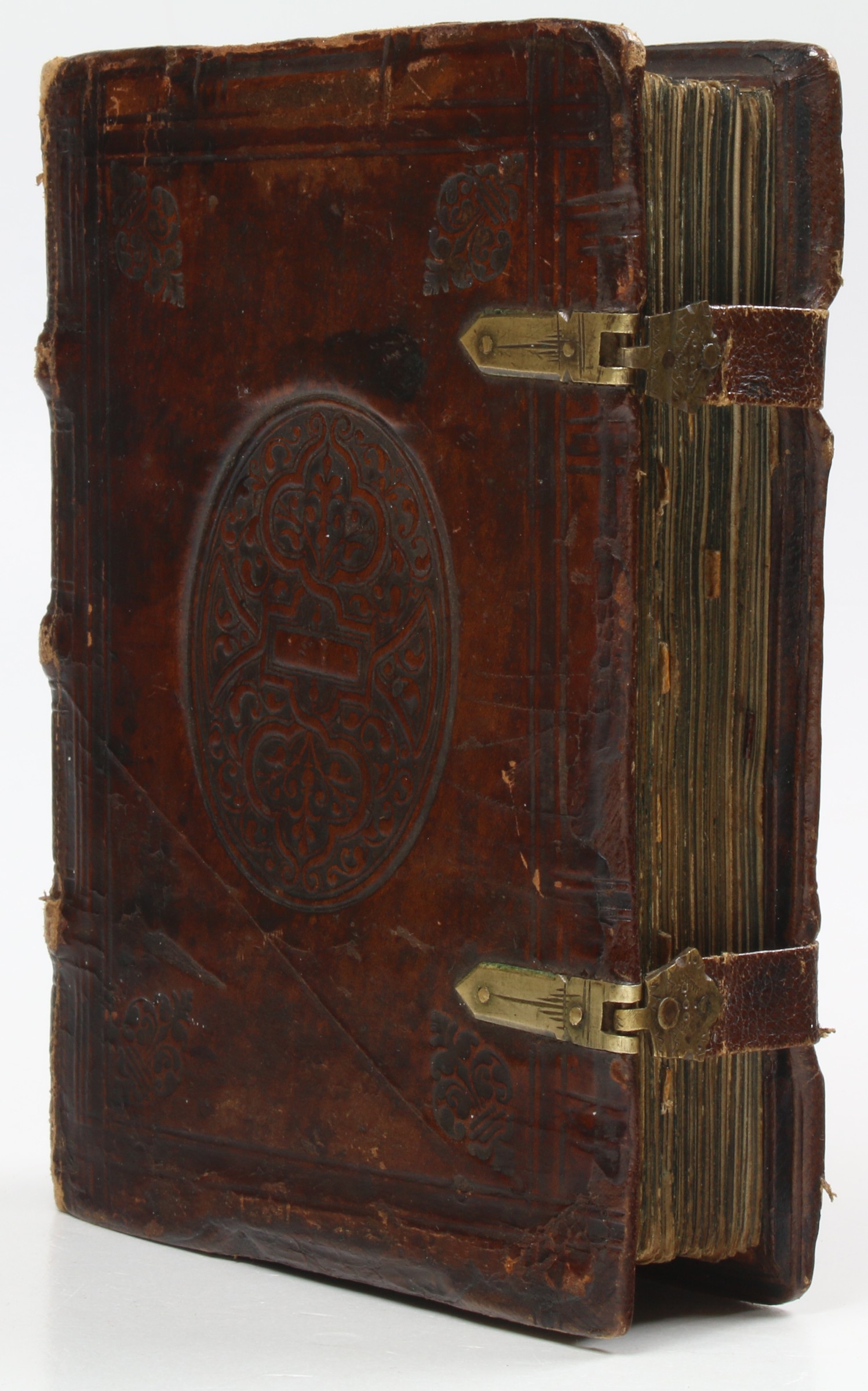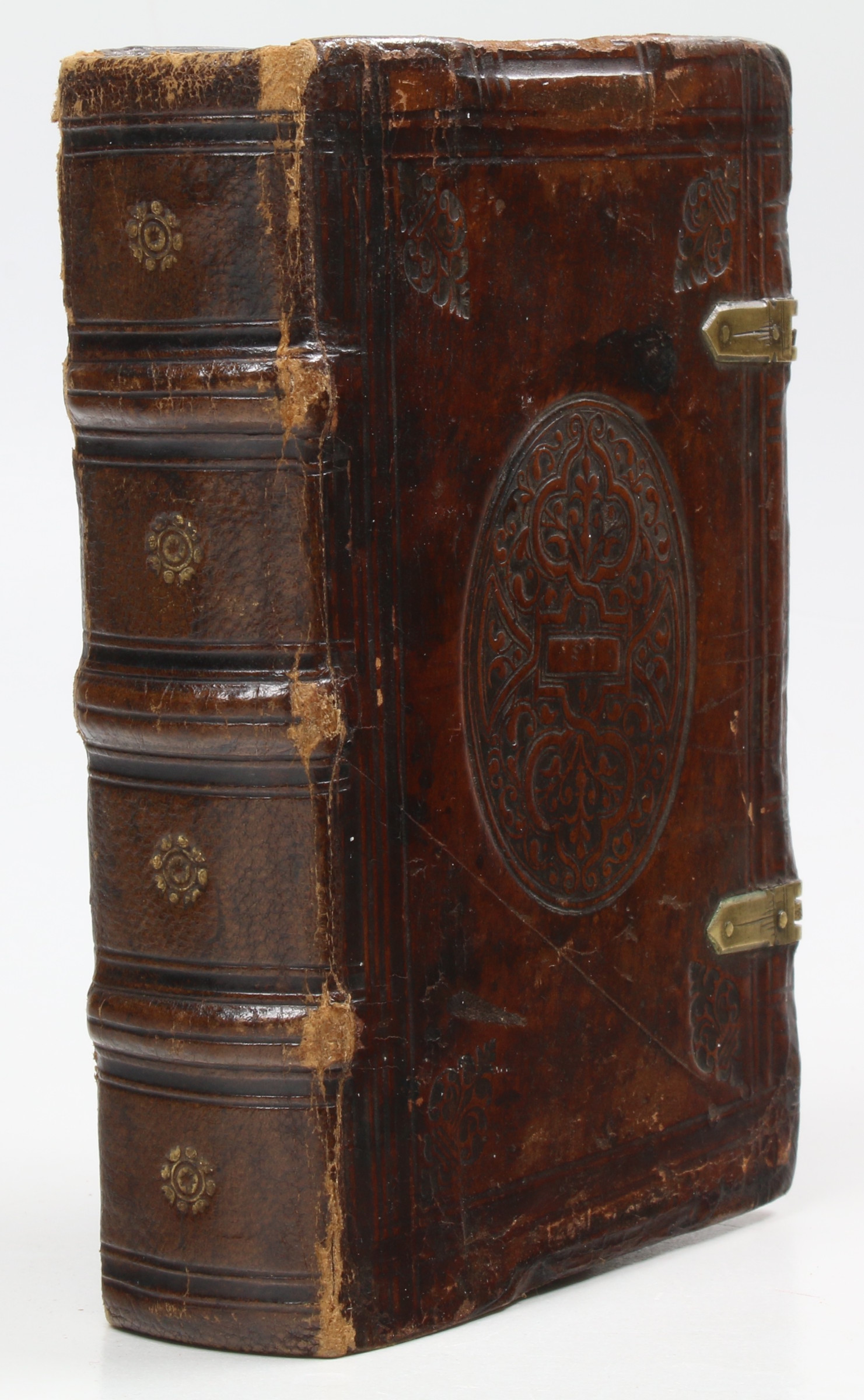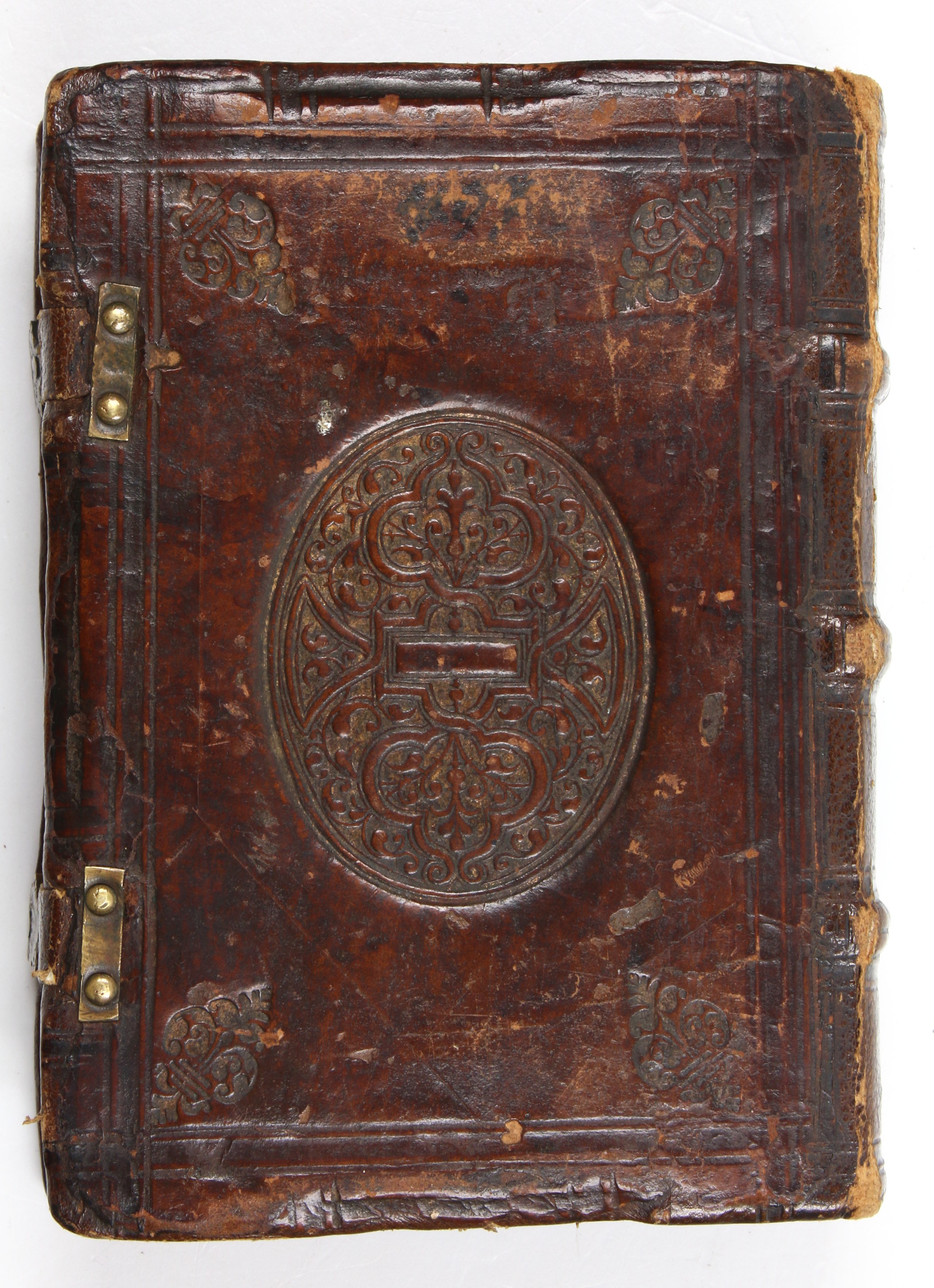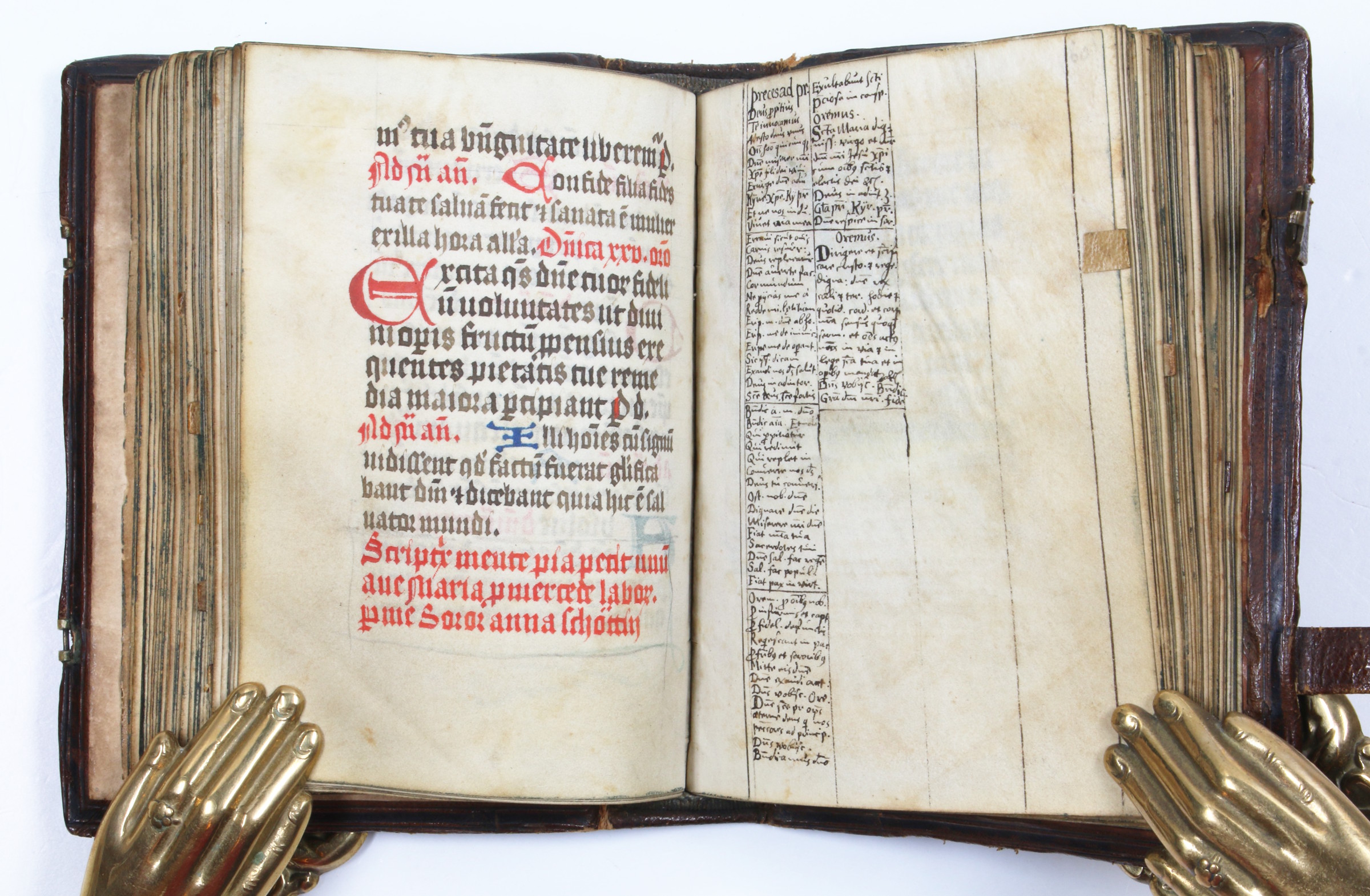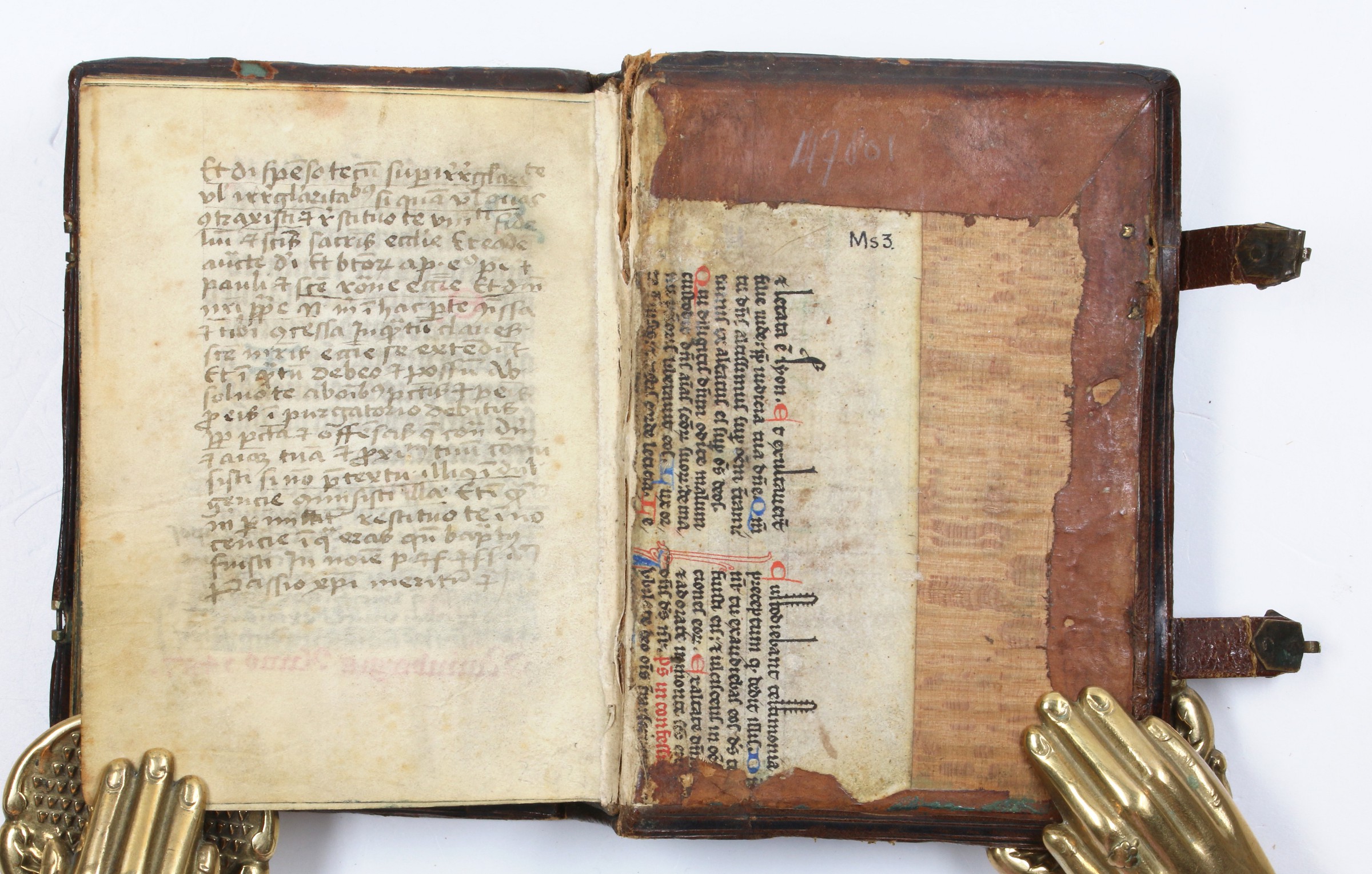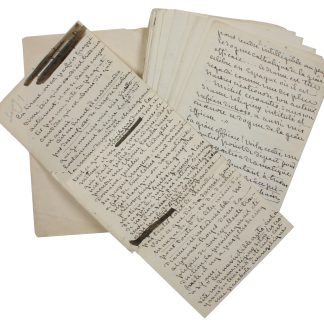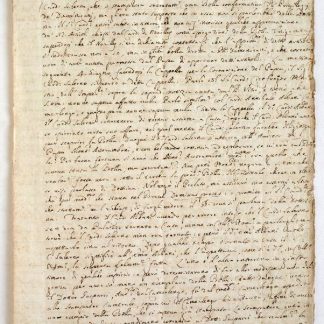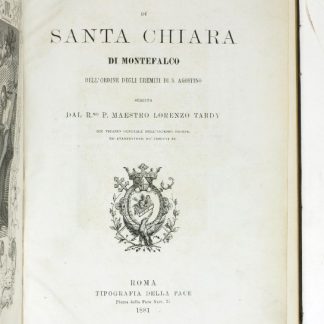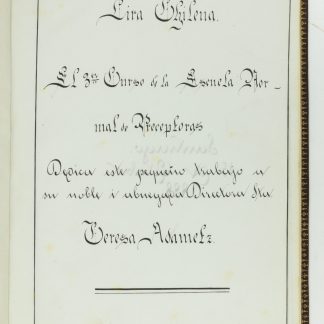[SOLD]
This item has sold. We are always interested in acquiring another copy or any item of comparable quality.
Written by a Nuremberg nun
Prayerbook, written by the nun-scribe Anna Schött.
8vo. Latin manuscript on vellum. 120 ff., 16 lines of gothic bookhand, red rubrics, initials in red, blue, or occasionally in burgundy, some with elaborate penwork. Bound in 16th century tooled brown leather over bevelled wooden boards, two metal headed clasps.
A fine monastic prayerbook manuscript, with readings for the various canonical hours as well as other feasts and Sundays of the ecclesiastical year, ending on fol. 59v with the scribal colophon. The prayers are followed by the Penitential Psalms (fol. 61r) and a Litany of Saints (fol. 69v) in which 'Johannes' is singled out in red and blue ink. The Office of the Dead (fol. 76v) follows; the 'Psalter of the Lord's Passion' (fol. 109r) completes the volume.
The manuscript was written by a female scribe who names herself "Soror Anna Schöttin" at the foot of the text on fol. 59v; she locates and dates the volume to "Norimbergiae Anno 1487" at the foot of its last leaf. There were only two houses for women in medieval Nuremberg: the Poor Clares and the Dominican convent dedicated to St. Catherine of Alexandria. While the absence of St Clare from the litany makes the former possibility unlikely, both SS. Catherine of Alexandria and the Dominican Catherine of Siena appear here. The Nuremberg Katharinenkloster was founded in 1296 and grew into a major cultural hub of the region; through gifts and its own productive scriptorium, its library was one of the largest in Germany by the end of the 15th century. The monastery declined rapidly after the city became Lutheran in 1521, and its last member died at the close of the 16th century. A half-page space left by the original scribe on the last leaf is filled with near-contemporary religious exortations which probably show the continuing use of the book at the convent, but the 17th century additions (similar material on fols. 49r, 60r, an endleaf and replacing a line or two of text on fol. 13r) perhaps indicate that the volume was carried removed from Nuremberg in the 16th century and continued in use elsewhere.
By the early 18th century the prayerbook appears to have entered private hands, as shown by the inscribed ownership of A. Büttner (dated Halle, 1708) on the first flyleaf. In the middle of the 19th century it was in the joint collection of Andrew G. Hammond (ca. 1811-67) and his wife Mary S. Hammond, née Ripley (ca. 1820-82), of Hartford, Connecticut (their oval inkstamp on verso of front endleaf, noting this book as their MS 2). Their library is known also to have contained a 12th century English Seneca fragment (Takamiya MS. 85, now in the Beinecke Library in Yale) and a collection of John Skelton's poems in manuscript (later Phillipps' MS. 10112, now Folger Library, Nb49). A. G. Hammond served as cashier and later President of the National Exchange Bank of Hartford; he was also a member of the Connecticut Historical Society. Their son, named after the father, was a neighbour and friend of the Clemens family at Hartford. A. G. Hammond jr. enjoyed a distinguished army career and may have liaised Mark Twain's long and close relationship with the U.S. Military Academy at West Point.
1. Written at St Catherine's Convent, Nuremberg, in 1487 and probably used there until the 16th century, then elsewhere in Germany until the 17th century.
2. Handwritten ownership of A. Büttner, Halle, 1708.
3. Private collection of the banker Andrew G. Hammond and Mary S. Hammond of Hartford, Connecticut, USA (ca. 1860).
4. Dr. Helmut Tenner, Heidelberg, 1970 (sale 78, 27 April 1970, lot 17, and sale 81, 12 October 1970, lot 14).
5. Dutch trade.
8vo (103 x 137 mm). Decorated Latin manuscript on vellum. 120 ff., plus two early paper endleaves in front. Complete; collation: i-ii10, iii10 (including two singletons, without apparent loss to text), iv-xii10. 16 lines of a precise and angular German gothic bookhand, per extensum. Red rubrics, capitals stroked in red, one-line initials in red or blue, 2-line initials in pale blue or dark red (larger initials occasionally in burgundy); larger initials in red or blue with elaborate penwork in contrasting colours, very large initials on frontispiece and fol. 61r in variegated red and blue, enclosing penwork, picking out foliate tiles in red or pale green and surrounded by frame of penwork in contrasting colours. Small folded vellum reference-tabs at outer edges of some leaves. Bound in 16th century tooled brown leather (central caubouchon within floral motifs and double filet) over bevelled wooden boards, spine rebacked and small binding fragments from front of book (13th century liturgical manuscripts) mounted on paper endleaves there; similar fragment at back still pasted to backboard. Two metal headed clasps (leather replaced).
Some scuffs and cracks to leather of binding, but overall fair and solid condition; spine skilfully rebacked. Text shows spots, stains and slight signs of wear, but overall well preserved.


